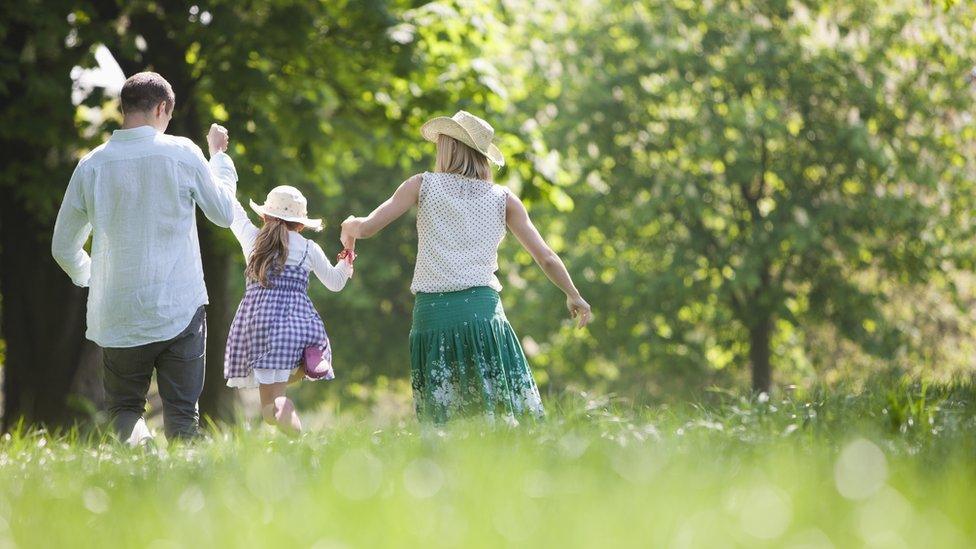Green spaces 'must be protected and enhanced'
- Published
- comments

Green spaces such as parks and fields could be lost to building sites in the coming years, despite their importance during the Coronavirus crisis.
That's according to a yearly survey by the Fields in Trust organisation which found that hundreds of thousands of people living in the UK could lose their local green space.
The Trust says that the equivalent of almost 20,000 football pitches worth of green areas could be built on with houses over the next 20 years, as the amount of people living in the country continues to increase.
They want more to be done to protect green spaces and for people's access to them to be improved
People 'want green space to be protected'
Since the government set out lockdown rules in March because of coronavirus, people across the UK have made regular trips to their local parks and fields to make use of the green space in their local area to take daily walks and exercise.
It estimated that nearly 3 million people currently lived more than a 10-minute walk away from a public park, and this figure could increase by a further 170,000 in the next five years.
A survey by the Campaign to Protect Rural England showed that 53% of people said they now appreciate local green spaces more, with 63% saying that protecting and enhancing green spaces should be a higher priority when lockdown ends.
Birds to see on your daily walk
While more than half said the lockdown had made them more aware of the importance of these spaces for their mental health and wellbeing.
Field in Trust also say that green space is a benefit to mental health as well as physical health, with those visiting parks on a regular basis having fewer visits to their doctor.
They estimate that people staying well by regularly using green spaces saves the NHS £111m per year.
Parks and green spaces play a vital role in people's health and wellbeing, and these benefits have been shown even more starkly during the really difficult times our country has faced in recent months.
Why are they worried?
A shortage of houses is one of the big issues discussed in UK - many charities claim that a lack of suitable housing means that buying a house is too expensive for many people and the number of people looking to rent is so high that renting is expensive too.
This can lead to many people not being able to live in their own homes and can even lead to homelessness.
But where should new houses be built. Authorities prefer to use sites which have previously been used for other developments or old indistrial sites, but nature groups worn that green spaces could be targetted too.
The Derby Arboretum was the first public park in Britain
A brief history of public parks in the UK
In Victorian Britain 180 years ago, the first public park was created in the city of Derby in the Midlands.
Joseph Strutt, a wealthy businessman who had made a fortune from the textiles industry making clothes and fabrics, donated an 11-acre plot of land to be developed into a huge garden. The result was the Derby Arboretum - an urban green space that provided an alternative to the industrial towns and cities of Victorian times.
The Arboretum, which is another word for a big garden, featured 1,000 different species of trees and plant life and was created so that the public could learn about nature.
Although there had been many parks and green spaces across the country before, unlike the other parks in Britain, the garden in Derby didn't cost anything to visit.
Strutt's idea was so popular that lots of other public green spaces across the UK started to open, including many of the parks we see today, including Victoria Park in Hackney, which was designed to give workers a place to have fresh air or Birkenhead Park near Liverpool in the Wirral.
The park in Birkenhead even went on to inspire New York's famous Central Park.
- Published26 May 2020
- Published28 April 2020
